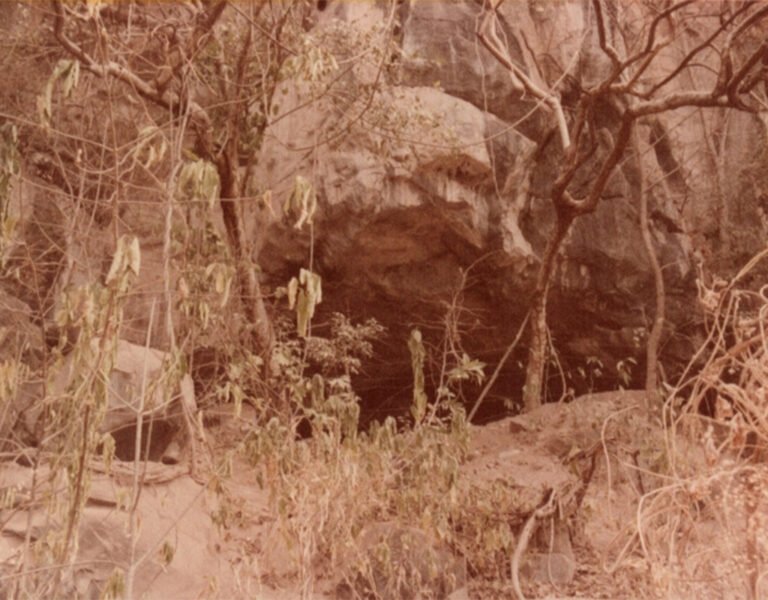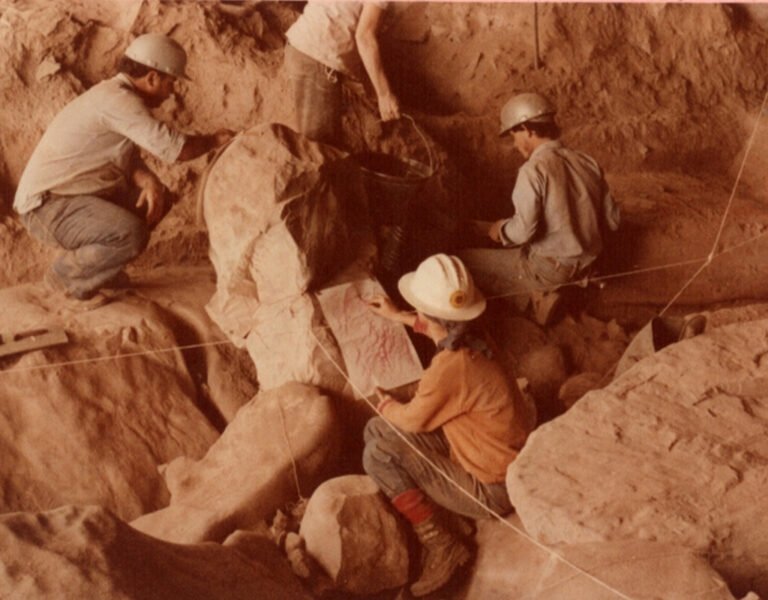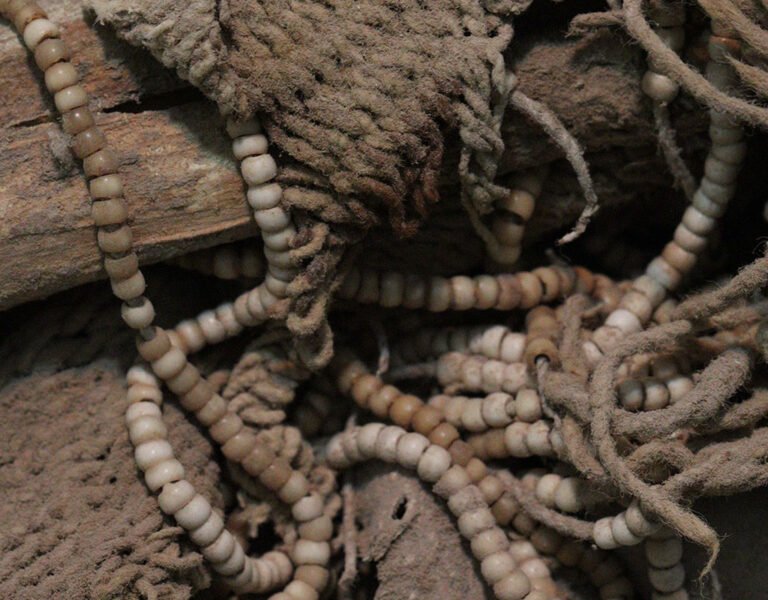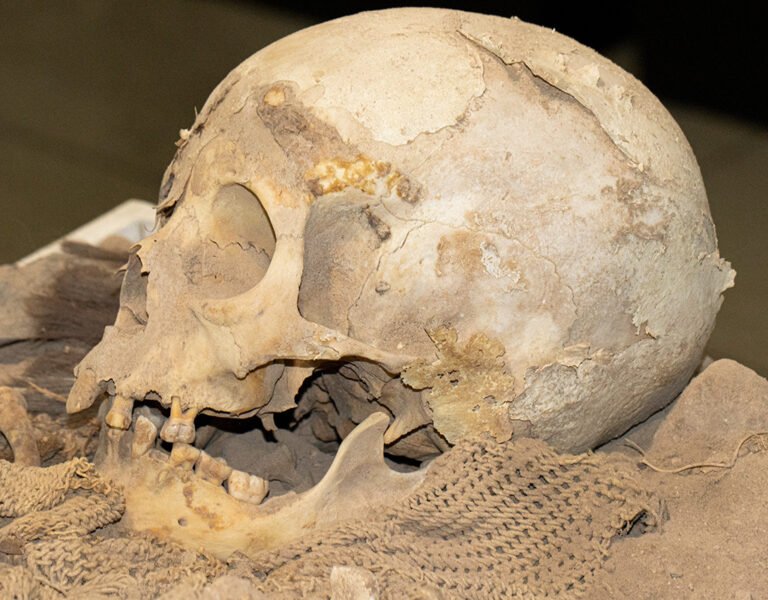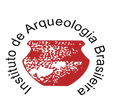Acauã mummy
Object description
The archeological site Gruta do Gentio II is one of the most complete in Brazil in terms of variety and quality of artifacts. It is a ceremonial site, located in a simple cave, chosen to house burials from around 12,000 BP. In it two occupational layers in two different cultural and temporal horizons were identified. The oldest horizon contains traces of the Archaic period (hunter – gatherer) and dates from 12000 to 5000 BP. There is an unoccupied interval, and around 4,500 years until historic times, the cave was used as a funerary zoning by Una society. The reoccupation by this tribal society takes place in the horticulturist horizon and is represented by the Unaí Ceramic Phase, the oldest of the Una Tradition found in the São Francisco Valley, northwest of Minas Gerais.
Among dozens of artifacts, a small natural mummy, a girl of approximately 12 years old was also collected (the dry climate of the cave mummified her), whose MtDNA classifies her as a descendant of the A2 haplotype, one of the oldest in America. She was buried on a natural shelf in the cave, with various funerary accompaniments. Legs and arms wrapped in razor grass seed necklaces give her the status of a special child, but a “fire-making bow” crossing the left shoulder and the tuberous root (cassava) on the right side of the chest, a symbol of the feminine found in other burials of that tradition, confirms it. She was buried in a thin cotton net and closing the bale, a deer leather protected her from 3350 BP until she was discovered in 1977 by the Instituto de Arqueologia Brasileira (IAB) group that, in tribute to the acauã bird, common in the region of Unaí, was thus named. This artifact has been the subject of high scientific studies established in agreements between IAB and FIOCRUZ since the 1970s.
Cultural affiliation of the object
Prehistoric Period
Una Tradition
Unaí Phase
Location Unaí, Minas Gerais
Gruta do gentio II site, MG RP 06
Level 50 – 70 cm (19,6 – 2,75 inches)
Cultural analysis of the object
Mummy type (skeletonized material and mummified fabrics)
Burial No. 10 Primary Type
Material – Human Bone
Dimension 100 x 40 cm (39,7 x 15,7 inches)
Dating 3350 BP
Source IAB 1977 Collection
Catalog 686

